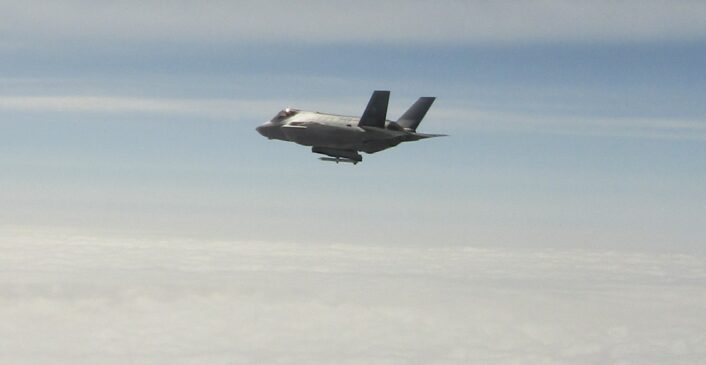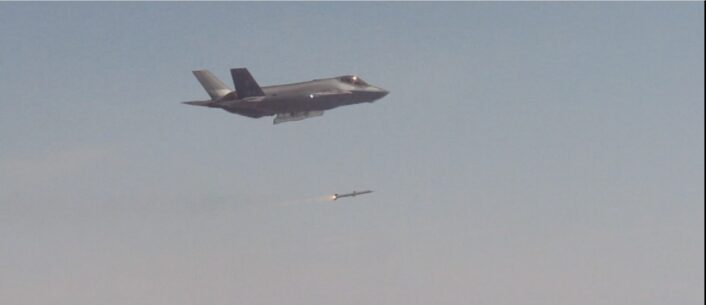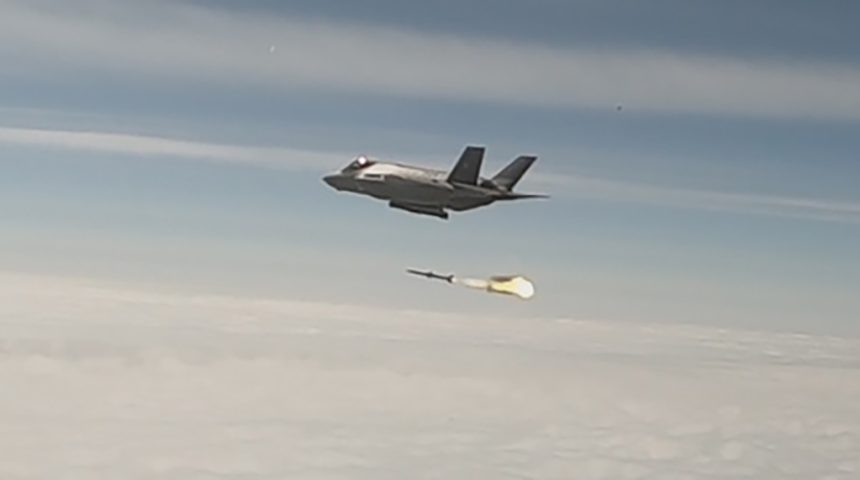Arctic Challenge 23 exercise provided the opportunity for the first real use of the AIM-120 Air-to-Air Missile by the Italian Air Force F-35s.
Earlier this month, two F-35As of the Aeronautica Militare (Italian Air Force) deployed to Orland Air Force Station, Norway (that is also the base of the RNoAF F-35s), to take part in Arctic Challenge Exercise 23 (ACE 23), carried out the first real launches of the AIM-120 AMRAAM (Advanced Medium Range Air-to-Air Missile). The launches, against two remotely controlled targets took place inside a firing range located off the western coast of Norway, were successful.

“Not only did the launches confirm the very high level of training and competence achieved by the Italian Air Force with the 5th generation Weapon System but also the extreme reliability and effectiveness of the F-35 which, with maximum precision and from a considerable distance, managed to find, identify, engage and hit both targets.”
The firing activity represents a further step towards the achievement of the FOC (Final Operational Capability), a milestone that the Italian Air Force plans to reach in 2023.

Current QRA loadout
Two AIM-120C5 AMRAAMs, carried in the internal weapons bay represent the SCL (Standard Conventional Load) of the F-35s in QRA (Quick Reaction Alert), both at home, supporting, when needed, the domestic SSSA (Servizio Sorveglianza Spazio Aereo – Air Space Surveillance Service) on a rotational basis, and abroad, to support NATO Air Policing (as done multiple times in Iceland and also in Estonia). In the future (around 2026), the Italian Lightning II jets will be able to operate in a “heavier” configuration, carrying also the AIM-9X Sidewinder AAMs (Air-to-Air Missiles), on the external underwing pylons, which have been ordered last year.
In case you are wondering why the F-35A, that is not a “pure” interceptor, is committed to provide QRA (Quick Reaction Alert), an air defense mission, here’s the explanation this Author provided in a previous article about the participation of the Italian Lightnings to the Icelandic Air Policing mission:
Well, the reason is quite simple: deploying the 5th gen. stealth aircraft under NATO command allows the service (in this case, the Italian Air Force) to test the asset as part of a different chain of command, with different procedures, on a different base, and in different (sometimes adverse/austere) weather conditions. The peacetime air policing mission requires the aircraft in QRA to scramble with live air-to-air missiles when there is the need to intercept, identify and escort, aircraft approaching or “skirting” NATO Ally’s sovereign airspace: a task that an F-35 is more than able to conduct. Moreover, the deployment on a NATO mission is one of the milestones the Italian Air Force has set along the path to achieve the type’s FOC ( BTW, it’s worth remembering that, first in Europe, the Italians declared the F-35’s IOC on Nov. 30, 2018).
ACE 23
In total, five F-35As and personnel belonging to the 32° Stormo (Wing) from Amendola have been deployed by the Aeronautica Militare to Norway, augmented by personnel assigned to the 6° Stormo, from Ghedi, the second Italian Air Force air base to operate the stealth aircraft.
The Italian assets integrated with allied 4th and 5th generation aircraft belonging to 13 nations to carry out activities spanning the full spectrum of aerospace capabilities, including Offensive Counter Air (OCA), Air Interdiction (AI) and Defense Counter Air (DCA) missions, during which they were supported by an Airborne Command and Control (AWACS) set-up and KC-135 Stratotanker assets for in-flight refueling operations.
About 150 aircraft and approximately 2,700 coalition have been involved in ACE 23, an exercise series taking place throughout Finland, Norway and Sweden. The biennial drills were born in 2013 as an interoperability training exercise between Finland, Sweden, and Norway, and it has now expanded to incorporate nearly every Arctic nation and many NATO Allies and Partners.
The U.S. Air Force and U.S. Navy as well as the other NATO air arms routinely conduct operations in the High North alongside the Finnish, Swedish, and Norwegian Air and Naval Forces, however, the size of ACE and the variety of assets that took part in the latest iteration of the exercise made it remarkable because they proved a growing pivot to the strategic Arctic theather, the “battlefield” for an intensifying struggle between the U.S., NATO and Russia, for military as well as economic reasons (mostly related to energy extraction and maritime shipping activities).









